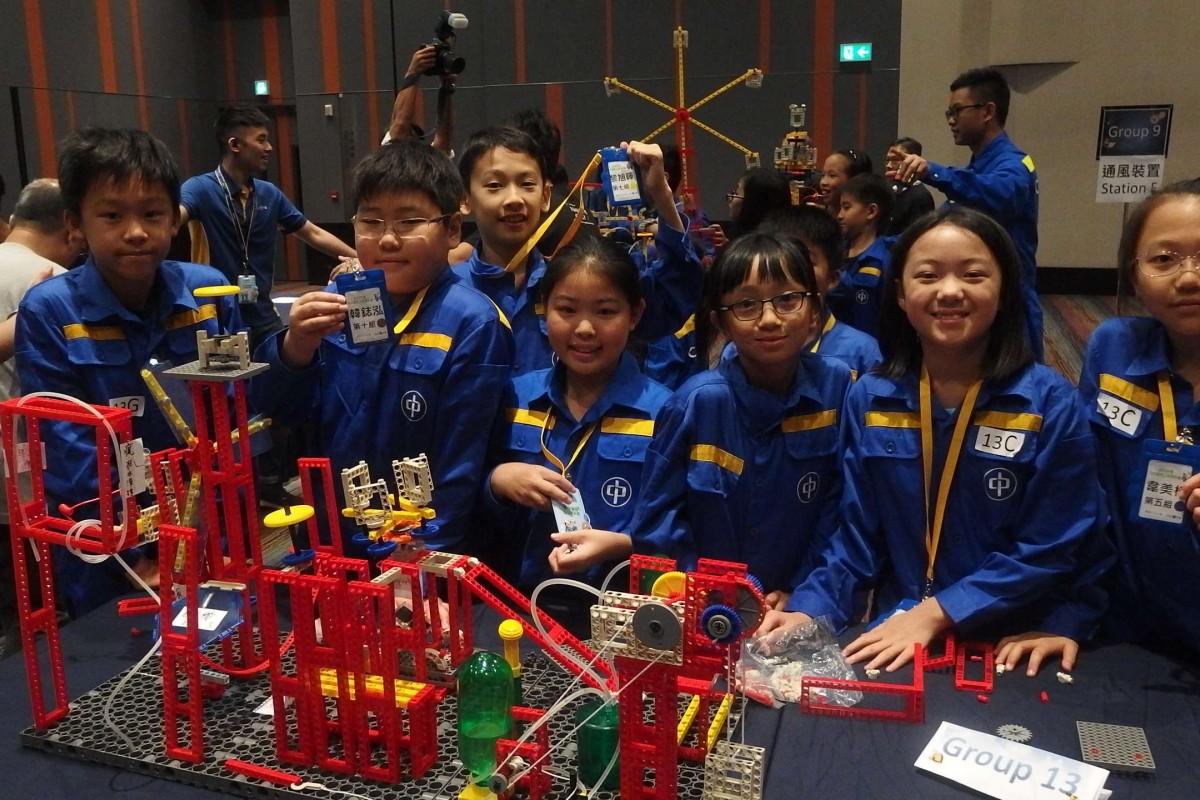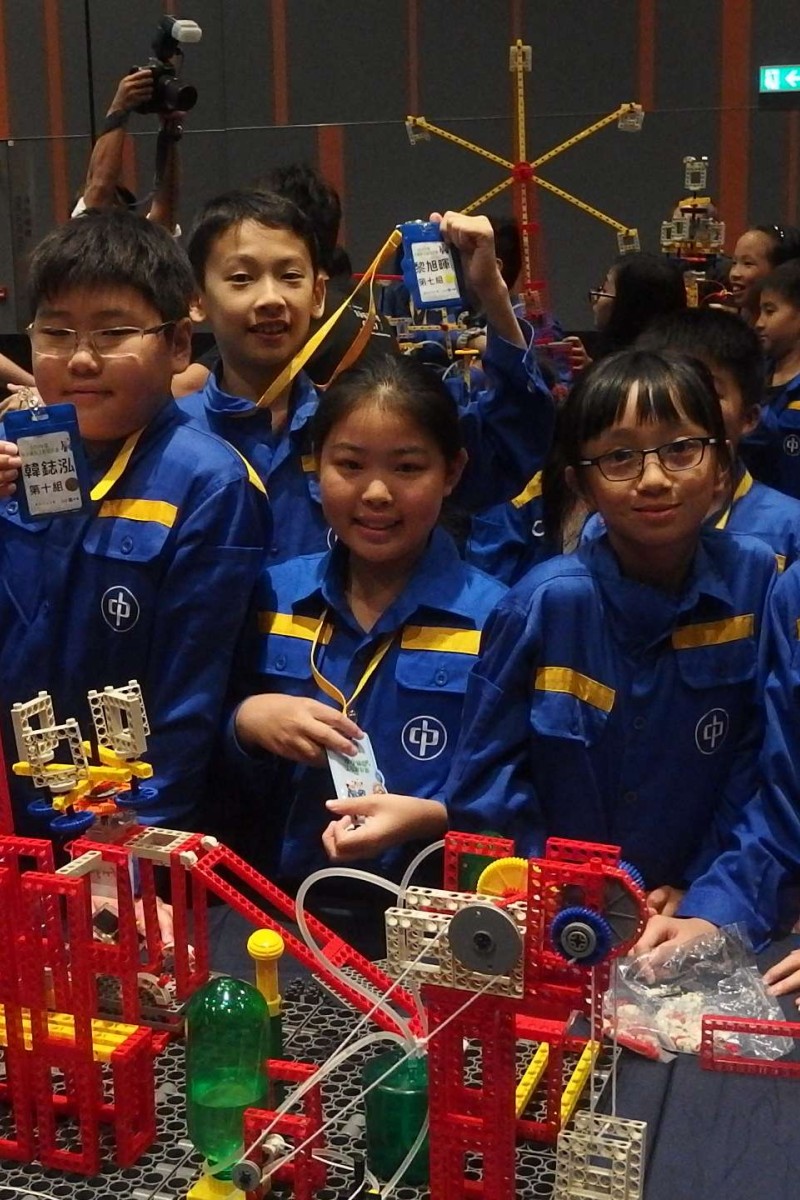 Bernice Lam (third from right) says doing experiments is the key to success.
Bernice Lam (third from right) says doing experiments is the key to success.For most primary school students in the city, the only way to learn about science is from textbooks – but science can be practical and exciting if you learn to apply it outside of the classroom. At least, that’s what some Hong Kong primary students learned when they took part in the fourth CLP Junior Green Engineer Programme this summer, organised by CLP Power Hong Kong Limited.
The programme provided an opportunity for students to gain useful and practical scientific knowledge through a four-day programme that included educational tours and experiments.
Young Post spoke to two participants, Tufail Ibraheem and Bernice Lam Fon-ching, to find out what they thought.
Finding out where electricity comes from
Tufail, a primary student from Yan Oi Tong Tin Ka Ping Primary School, worked hard to bring a design he had thought of to life – a model flying swing, like one in a theme park, but powered by solar energy – on the last day of the programme.
The 10-year-old student said it was the first time he had ever done something like that, and he had been able to use what he had learned from the programme to help bring his invention to life.
“Before taking part in the four-day summer programme, the only science learning we had ever done was from textbooks and websites. It was hard to understand what solar energy was, because our knowledge was based on words and pictures,” he explained.
“I was impressed by the System Control Centre in Tai Po. It’s hard to imagine that a centre like this helps supply electricity to our homes and the city. Engineers also make sure that the power gets to our homes. Their jobs are so important and interesting.”
And now, on to the experiments
For a Primary Five student, concepts such as renewable energy or power transmission can be difficult to understand. The tour helped Tufail understand the theory, but conducting experiments was the most useful aspect.
“It was a very challenging task. First, we had to learn how solar panels worked. Our team then had to build a transmission network, which allowed us to produce and transmit power, and make the swing move,” he said.
“But the most important thing I learned was that the process is key. We had to follow every step. If one step wasn’t done properly, we couldn’t move to the next step and expect our product to work. It was a tremendous experience!” Tufail said.
The programme certainly sparked an interest in science and technology, added Tufail, who hopes to become an engineer.
Scientific ambition
Bernice, 10, a Primary Five student from Diocesan Girls’ Junior School, said the programme helped her to pursue her own interests – she wants to be a scientist in the future.
That meant the tour of Black Point Power Station, a gas-fired power station in Tuen Mun, was the most exciting part of the experience for her.
She told Young Post that seeing science that was real was an extraordinary experience, and one that got her excited about power sources and scientific inventions.
“It was surreal! I couldn’t believe my eyes. I could see the process of power generation actually happening at Black Point Power Station,” said Bernice.
Apart from being interested in how power is made and transmitted, Bernice also said that she learned the basics of renewable energy, something she had never encountered before.
Bernice took her first step towards becoming a junior engineer by designing a model ride similar to the Tea Cup ride at an amusement park.
“We had to use everything we learned from the programme. We tried to make the ride move using solar energy. I was worried in the beginning because it didn’t work. But our mentors told us not to hurry; to take things slow and follow each step. We had to go back if one step was wrong. We also needed to try different methods, like using different wires, to transmit energy.”
The experiments also taught her to be patient. “Engineers don’t know what will happen next, so if they’re impatient, things will go wrong. And doing lots of experiments is the only way to ensure they can solve any problems they encounter,” she said.
Eric Cheung, Senior Director of Marketing and Customer Services of CLP Power Hong Kong Limited, said the programme was important for raising awareness of energy saving and environmental protection. “Through this programme, we aim to provide the students with a better understanding of the power and engineering industry, to raise their awareness of climate change and most importantly, to inspire them to be role models who can encourage their family members, teachers and fellow students to save energy at home and at school,” he says.
